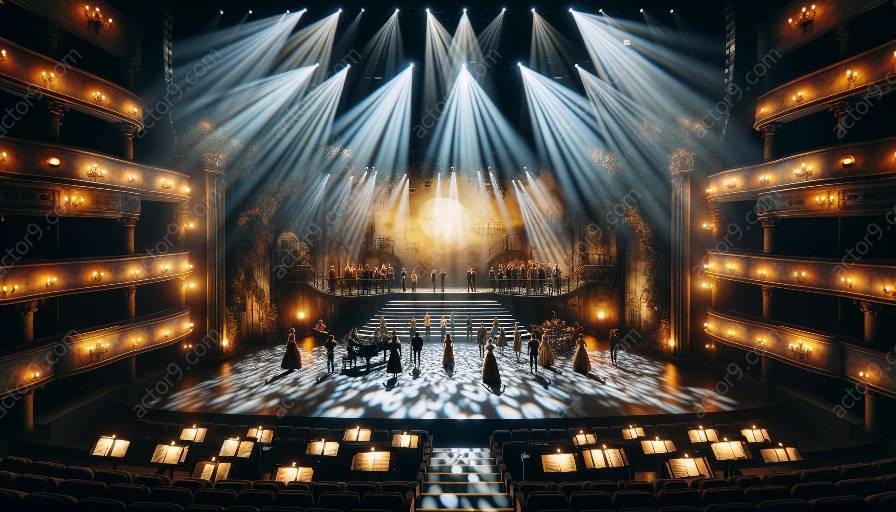Perception of Space in Musical Theatre opens up a world of creativity and innovation, influencing lighting design to create immersive and captivating experiences. Understanding how audiences perceive and interact with the space in musical theatre is essential for lighting designers to effectively enhance storytelling and emotional impact. This topic cluster aims to explore the dynamics of space perception, its relationship with lighting design in musical theatre, and how it contributes to the overall theatrical experience.
Exploring the Perception of Space
Perception of space in musical theatre encompasses a multidimensional experience that engages the audience's senses, emotions, and imagination. The spatial dynamics in a theatre production are not confined to physical dimensions but extend to psychological and emotional connections. The arrangement of set pieces, stage depth, height variations, and the audience's viewing angle all contribute to the perception of space.
Moreover, the use of atmospheric effects, such as fog, haze, and projection mapping, further manipulates the perceived space, transforming it into a surreal and dynamic environment. Understanding how different spatial configurations evoke specific emotional responses is vital for lighting designers to craft compelling visuals that align with the narrative and thematic elements of the musical.
Impact of Spatial Perception on Lighting Design
The perception of space directly influences the approach to lighting design in musical theatre. Lighting designers harness the power of spatial dynamics to guide the audience's focus, evoke mood and atmosphere, and accentuate the dramatic elements of the performance. By illuminating specific areas of the stage or altering the intensity and color of light, designers can shape the perceived space, creating depth, dimension, and visual interest.
Furthermore, understanding the audience's viewpoint and how they experience the spatial layout informs lighting designers' decisions regarding light angles, shadows, and highlighting key visual elements. The interplay between perceived space and lighting design culminates in the seamless integration of visual storytelling, amplifying the overall impact of the musical production.
Creating Immersive Theatrical Experiences
By effectively manipulating the perception of space through lighting design, musical theatre productions have the potential to transport audiences to diverse realms, evoke powerful emotions, and immerse them in a transformative journey. The synergy between spatial perception, lighting design, and the overarching narrative enables the creation of immersive and unforgettable experiences.
Understanding the psychological and sensory aspects of spatial perception empowers lighting designers to sculpt the theatrical environment, ensuring that every lighting cue contributes to the audience's engagement and emotional resonance. The interwoven layers of perceived space and lighting design intertwine to shape a dynamic and evocative theatrical landscape, captivating the audience from curtain rise to applause.
The Synthesis of Spatial Perception, Lighting Design, and Musical Theatre
The fusion of spatial perception, lighting design, and musical theatre exemplifies a harmonious interplay of artistic expression, technical expertise, and emotional storytelling. Through meticulous attention to spatial details, lighting designers elevate the visual tapestry of musical theatre, enveloping the audience in a sensorial feast of light, shadow, and spatial illusions.
The seamless synchronization of spatial perception and lighting design unlocks boundless opportunities for evocative scenic transitions, dramatic revelations, and captivating visual motifs. As musical theatre continues to evolve, the manipulation of space and light remains a cornerstone of innovation, offering endless possibilities for creating enchanting and immersive experiences that resonate with audiences of all ages and backgrounds.




































